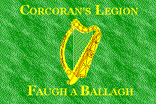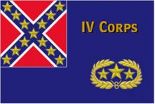In reading "Fighting for the Confederacy" by E.P. Alexander (Chapel Hill, NC, 1989) I found some of his observations on the limitations of close cooperation of infantry and artillery worth sharing, for I believe most of us are guilty of rather unhistorical tactics in this respect:
"[...] it must be borne in mind that <u>our Confederate artillery could only sparingly, & in great emergency, be allowed to fire over the heads of our infantry</u>. We were always liable to premature explosions of shell & shrapnel, & our infantry knew it by sad experience, & I have known of their threatening to fire back at our guns [:D] if we opened over their heads. Of course, solid shot could be safely so used, but that is the least effective ammunition, & the infantry would not know the difference & would be demoralized & angry all the same.
Of course, also, the infantry would not fire over the heads of the artillery. Hence it results that <u>each arm must have its own fighting front free</u>, & they do not mix well in a fighting charge. Again it must be remembered that <u>artillery on the march presents such an immense target to infantry, and to other artillery in position, that within their respective ranges it requires very few minutes to disable it</u>. For every horse in a battery team is fast to the limber or caisson, & brings the rest of the team to a stop, when crippled, until he can be cut out. This halts them under fire every time they are hit, & makes easy more hits." (p. 248; emphases are mine.)
Pp. 177-78 he has a graphic description how, if you dared to move a battery under fire on a field, every gun and sharpshooter within range would instantly open up on the teams, trying to immobilize the guns, so it was really best avoided.
How often do we move batteries well within range of the enemy almost with impunity? In the BG games, you at least ran the risk of a "crew killed" result from defensive fire (should probably better be "team killed"), but in HPS? Don't we as a rule fire over the infantry with our guns, even at short ranges? Not very historical, it would appear.
Other (minor) things I thought worth noting in the book:
- According to Alexander, the Federals had a great advantage when digging in (in 1864) in that they had professional pioneers to make the fortification, while the Reb infantry had to dig personally with whatever tools they had. (p. 370)
- Late in the war, the Federals would sometimes attack with clouds of skirmishers only, offering no target for artillery--we can't do that in the game, the way skirmishers are presently portrayed. (p. 426.)
- The nonchalant way in which Reb soldiers not only killed colored Union soldiers as a matter of course, but even scrambled to get a "chance to shoot a nigger". (p. 478) (OK, that's not really relevant to our gaming, thank God, but it surprised me still.)
Gen. Walter, USA
<i>The Blue Blitz</i>
3/2/VIII AoS
West Point Class of '01
[url="http://www.home.datacomm.ch/dierk.walter/2VIIIAoS/persrecord.htm"]

[/url]


"... and keep moving on."





